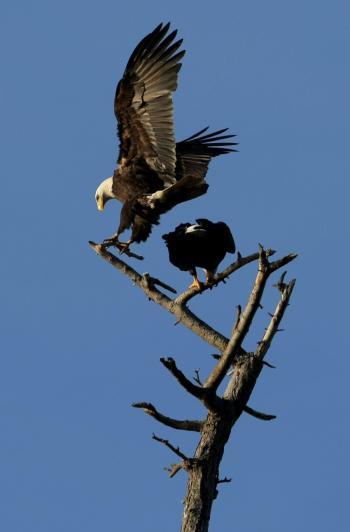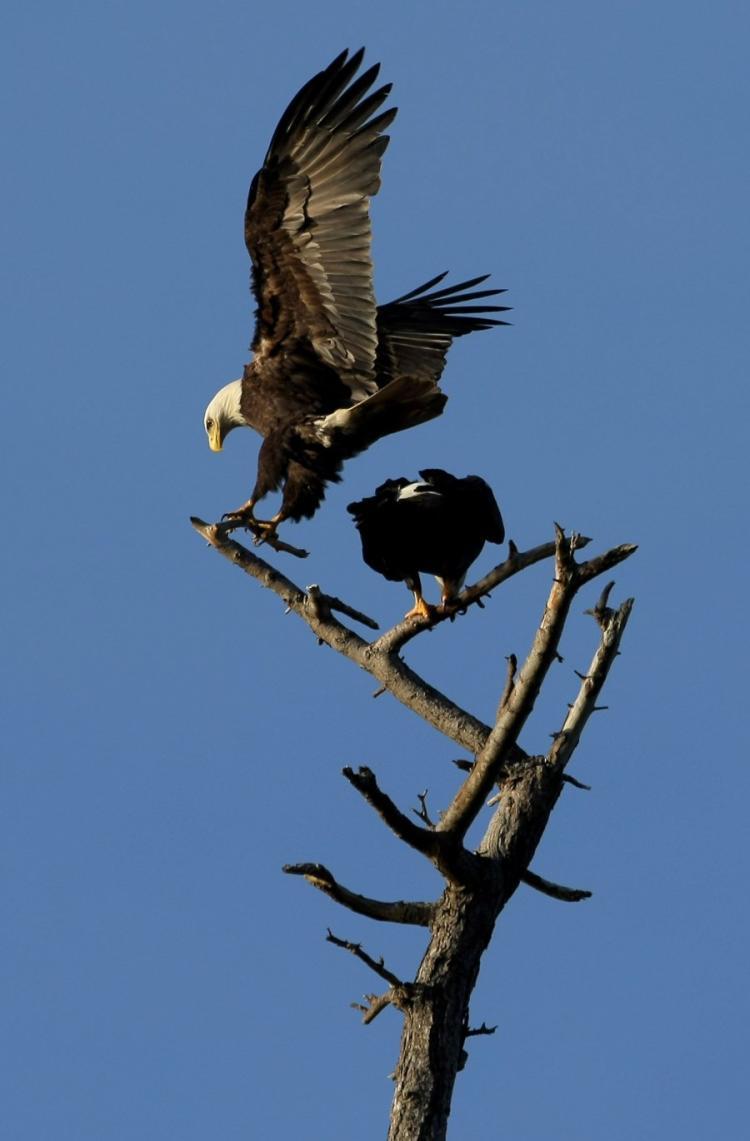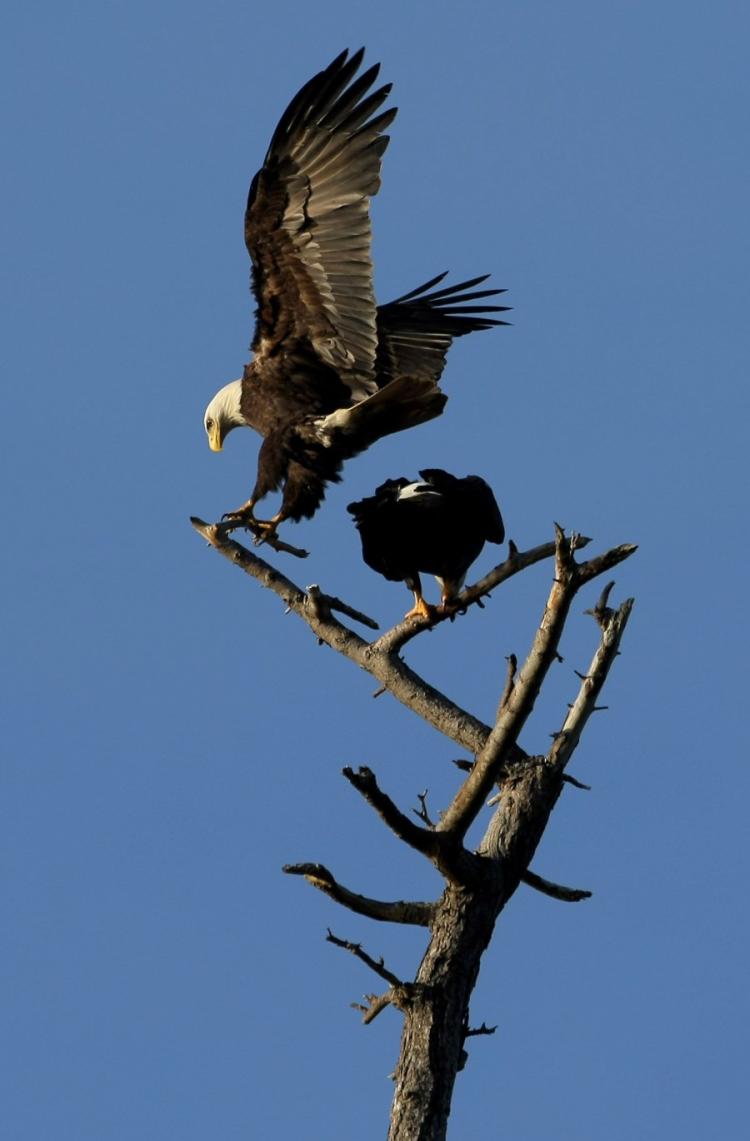As a result of a weak, late-season chum salmon run, thousands of bald eagles that normally feed on salmon in rivers from Alaska to British Columbia are starving and forced to scavenge landfills to survive.
The birds depend on late fall runs of chum, the last salmon species to spawn each year, to carry them through the winter. But the 2010 chum run was much lower than usual, and not enough to sustain the eagles through periods of scarcity.
David Hancock, biologist, author, and founder of the Hancock Wildlife Foundation, says the eagles have few alternative food sources this time of year and are in the most desperate situation he’s seen in over 40 years of studying west coast wildlife.
“The alternatives, if the salmon aren’t there, are not very good for the eagles. There’s just nothing else, so they move into the local refuse and landfills. On one day, we had 1,387 eagles at the landfill—they were in desperation,” he says.
About 7,200 bald eagles that descended near Chehalis River in the southwest corner of British Columbia quickly exhausted the salmon supply, Hancock says. Just 10 days later the eagle population was reduced to 348 as they dispersed to find other food sources.
He says many eagles have resorted to “stealing” food from gulls and other birds at landfills in greater Vancouver, affecting these species as well. Compounding the problem is an especially cold winter that puts additional stress on their fight to survive.
The hardest hit are young eagles that haven’t yet reached adulthood. Eagles don’t learn hunting skills until they are about three years old, so largely depend on food sources that are already deceased. Chum is an ideal food source because the salmon die naturally after spawning.
The birds depend on late fall runs of chum, the last salmon species to spawn each year, to carry them through the winter. But the 2010 chum run was much lower than usual, and not enough to sustain the eagles through periods of scarcity.
David Hancock, biologist, author, and founder of the Hancock Wildlife Foundation, says the eagles have few alternative food sources this time of year and are in the most desperate situation he’s seen in over 40 years of studying west coast wildlife.
“The alternatives, if the salmon aren’t there, are not very good for the eagles. There’s just nothing else, so they move into the local refuse and landfills. On one day, we had 1,387 eagles at the landfill—they were in desperation,” he says.
About 7,200 bald eagles that descended near Chehalis River in the southwest corner of British Columbia quickly exhausted the salmon supply, Hancock says. Just 10 days later the eagle population was reduced to 348 as they dispersed to find other food sources.
He says many eagles have resorted to “stealing” food from gulls and other birds at landfills in greater Vancouver, affecting these species as well. Compounding the problem is an especially cold winter that puts additional stress on their fight to survive.
The hardest hit are young eagles that haven’t yet reached adulthood. Eagles don’t learn hunting skills until they are about three years old, so largely depend on food sources that are already deceased. Chum is an ideal food source because the salmon die naturally after spawning.


